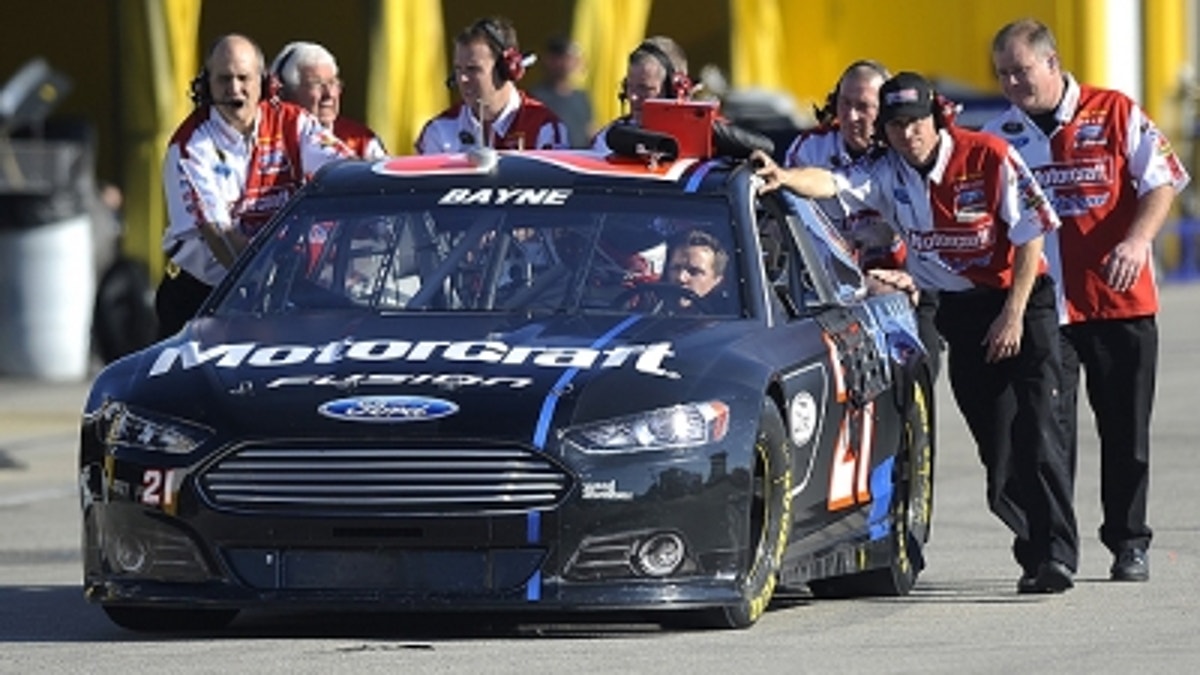
With competition between manufacturers at an all-time high in the NASCAR Sprint Cup Series, the pressure is always on teams to distinguish themselves from one another. And the new Generation 6 car likely will just tighten the field among the best in NASCAR.
So where will teams find an advantage in 2013? Keep an eye on pit road.
“It puts more power in the hands of the teams,” Stewart-Haas Racing driver Ryan Newman said. “They’re having to adapt to a new body . . . the driver still has part of the equation, but I think right now the driver is less of the equation with the new car.
“For the teams to actually get it figured out, they have to give us something that we can hit our marks with and be consistent and make it good on the long run, the teams are so much more important to start the season, then we’ll be able to refine our feeling to give more of a driver’s perspective of it later in the season.”
From the moment that drivers dip down on the apron, hit the first cone on pit road and use the timing lines (which electronically record the speed of the cars in different segments) as mini drag strips while getting into their pit boxes through the execution of the stop by the over-the-wall crews, seconds can be gained — or loss.
The top teams carefully choreograph the pit stops. They practice, review tape and practice some more to minimize the actual time spent with the car in the pit box. So how could the stops look different this season?
Two areas to specifically keep an eye on are the rear of the car and the fueling system. Considering the facelift the Gen-6 car received, starting with the length of the body being 2.3 inches shorter (196.2 inches) and 3 inches wider (77 inches), tire changers and carriers will have to slightly adapt their traditional path.
“It’s more noticeable on the rear (tires),” says veteran Mike Lingerfelt, who changes the front tires for the No. 17 Roush Fenway Racing team of Ricky Stenhouse Jr.'s Ford. “The tails are shorter, so it makes like a half step shorter around the back.
“The front seems like with the new fenders, you have to pull (the tires) further and straighter because of the larger fenders — almost like pitting a truck.”
NASCAR also shortened the fueling can from a maximum of 70 inches last year to 62 inches and lowered the fueling inlet on the cars by about an inch for 2013. The change prompted some teams to change gasmen and opt for a shorter stockier body type that works with the angle that the can enters the inlet. Other teams have chosen just to adapt the stops with their current gasman. Regardless, the change in cans with the shorter fill hose and angle have added a half-second for a full 18-gallon fuel stop.
FOX Sports analyst Jeff Hammond, who is also part owner of the Performance Instruction and Training (PIT) that coaches aspiring and current over-the-wall crews, doesn’t expect pit stops to change dramatically. However, he said, “They will still have a huge importance with the outcomes of the races.”
“NASCAR took away some of the handling flexibility that it had with them (Car of Tomorrow), but they’ve given them back new parameters to work with,” Hammond said. “It will challenge the teams and challenge the drivers. This car is really going to showcase the adaptability of the teams and the guys that drive the car.
"The playing field is pretty darn level, so the teams themselves (that can make) minor adjustments as well as the driver who can work through, work by or ignore the problems with it and make the most of what is great about it are going to come out on top."
While some crew chiefs believe the lighter cars (150 pounds less than the COT) will help tire wear, Hammond believes that teams that rely on increasing camber (the angle between the vertical axis of the wheels) to offer better handling for the drivers could have just the opposite effect.
“Just learning to deal with whatever the tire wear issues are (will be an issue),” Hammond said. “I think we’re going to see more potential problems — not that we’re going to have them, but there’s more potential for problems at certain racetracks with the camber the teams are going to run to try to make them handle.
“We could see left rear tires wear out that we’ve never seen before, right rear tires wear out that we haven’t seen before — at least in recent years because we’re going to really be putting these cars on the edge and on the limit to make the cars drive better for the competitors.
“We’re still going to see the cream of the crop rise to the top — the Jimmie Johnsons, the Tony Stewarts and the Brad Keselowskis to set the tone for this season. But if you can get adapted quickly in the first five or six races, they will benefit with early wins or multiple wins because of it.”
